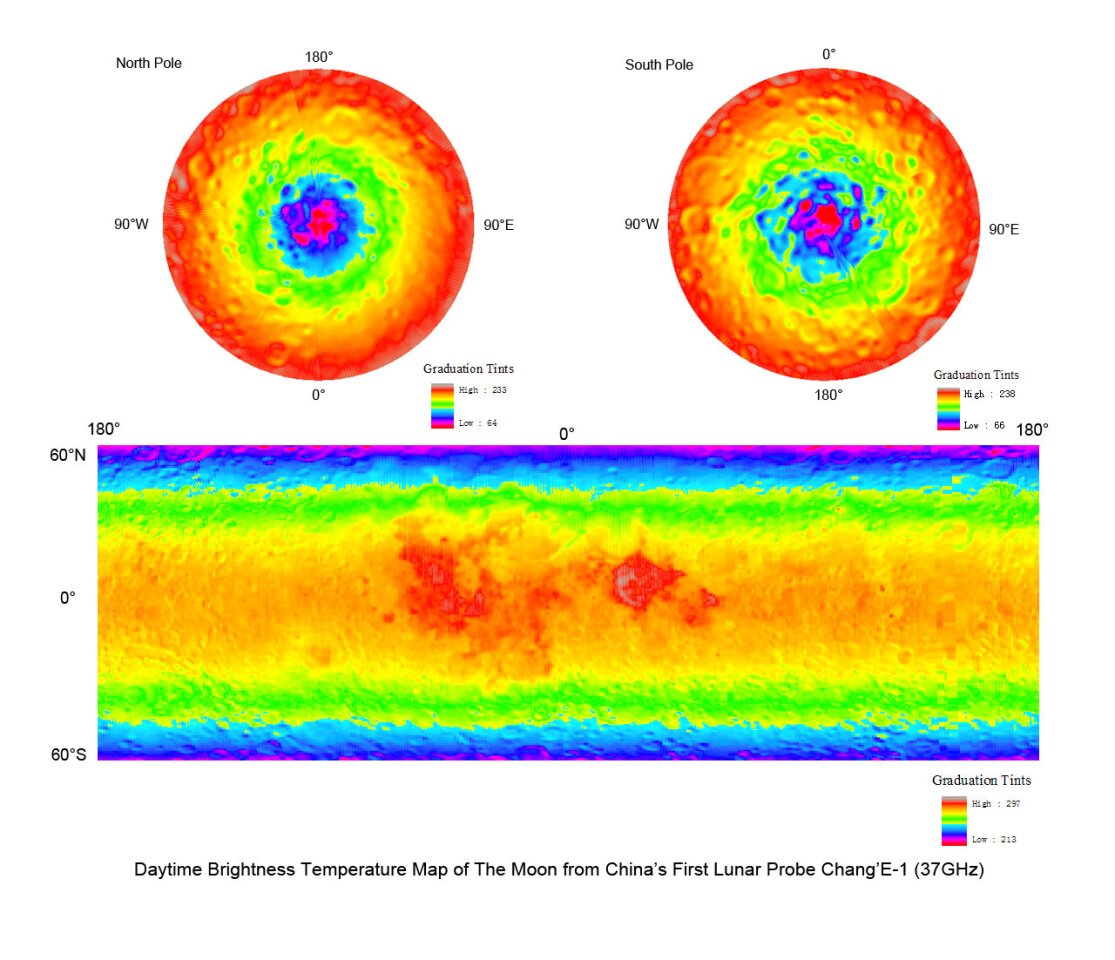The first complete microwave image of the Moon taken by Chinese lunar satellite Chang'E-1 has been revealed. Chang’E-1 is China’s first scientific mission to explore planetary bodies beyond Earth and the on-board Lunar Microwave Radiometer has made it possible for the first time to globally map the Moon in microwave frequencies. Radar observations of the Moon are unable to provide thermal information, and microwave observations taken from Earth cannot reach the far side of the moon. So Chang'E-1's (CE-1) orbit was conducted at an altitude of 200km (124 miles) and allowed it to observe every location of the moon with a nadir view and at high spatial resolution.
The Lunar Microwave Radiometer (MRM) was able to obtain brightness temperature data globally eight times from the surface and deeper layers of the Moon, revealing radiation and its variation during both lunar daytime and night-time periods. This allowed a valuable opportunity to study the lunar regolith – ‘dust’ and impact debris that covers almost the entire surface of the Moon.

The MRM measured microwaves in four frequency channels measuring layers a few centimeters below the surface to depths beyond a few meters. This allowed scientists to infer the thermo-physical properties of the lunar regolith as well as variation of its thickness. They hope this information will help them to estimate distribution and amount of helium 3 which has been suggested as a nuclear fuel for in-situ fusion energy production in possible future human settlements on the Moon. Furthermore a state-of the-art image with unprecedented image quality and positioning precision was produced by the stereo camera, and the Solar Wind Ion Detector (SWID) discovered acceleration of scattered solar wind protons close to the lunar polar terminator.
The results of the mission will be presented by Dr. Yong-Chun Zheng and Dr. Kwing L. Chan from the Hong Kong University of Science &Technology; at the European Planetary Science Congress in Rome from Monday 20th to Wednesday 22nd September. “No future mission, from any country, has been planned with a comparable program in microwave measurement”, says Dr. Zheng of the Chinese Academy of Sciences. A sister orbital probe to CE-1, Chang'E-2, is scheduled to be launched in October 2010.





